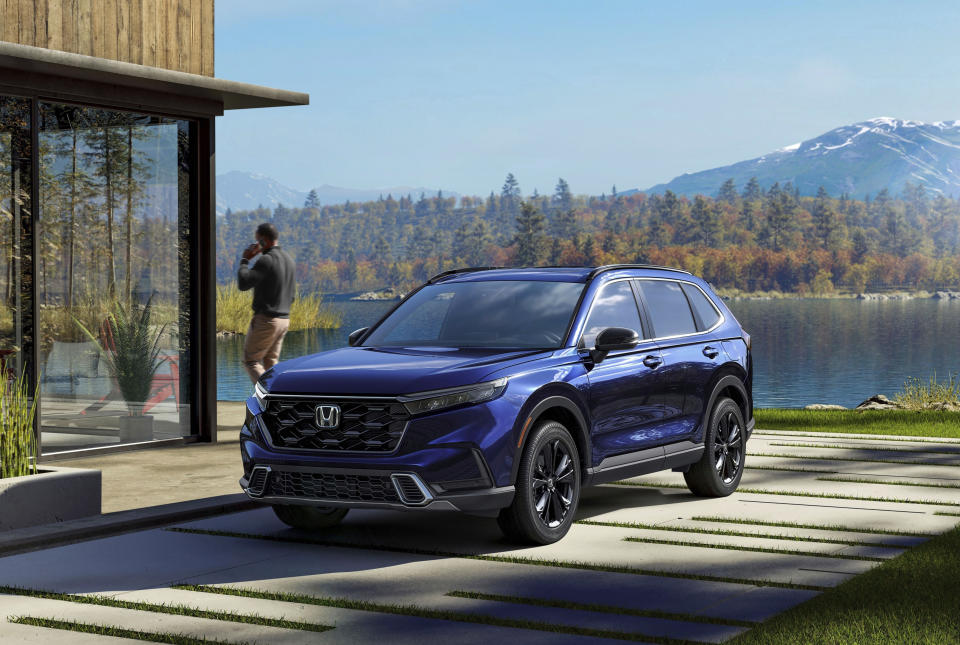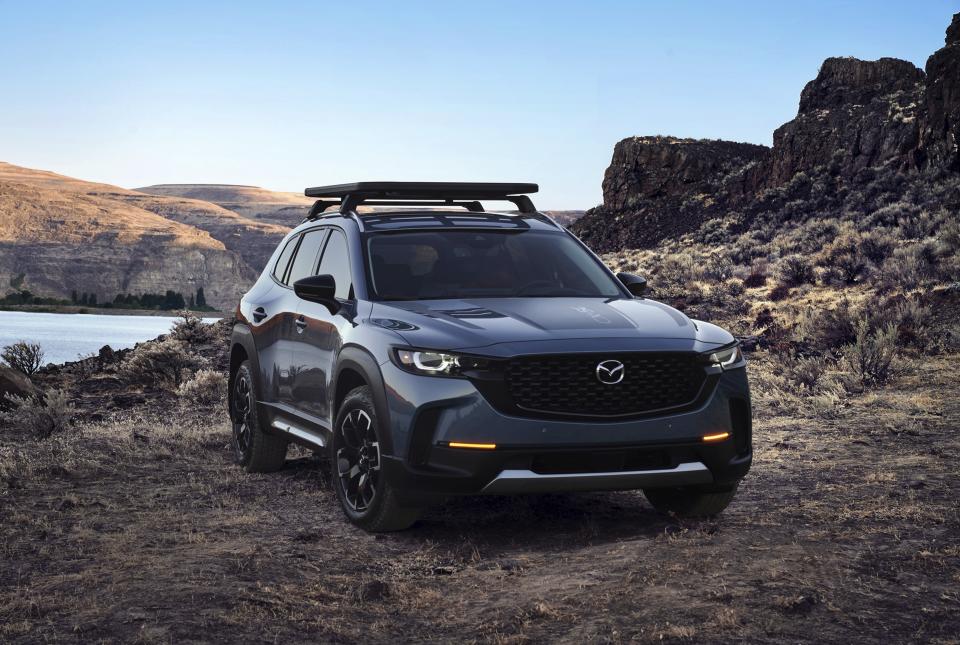Edmunds compares: 2023 Mazda CX-50 vs. Honda CR-V
The Honda CR-V has consistently been one of the most popular small crossover SUVs on sale in America. It’s also coming off a full 2023 redesign in which it received more rear legroom, an improved hybrid powertrain option, and updated technology features. It’s an intriguing choice and highly recommended by Edmunds’ experts. But it’s not the only one. The Mazda CX-50 is a new competitor that boasts distinctive styling, a classy interior design, and a strong turbocharged engine option. Which one of these SUVs is the better buy? Edmunds compares them to find a winner.
FUEL ECONOMY AND POWER
The Mazda CX-50 comes standard with a four-cylinder engine and all-wheel drive. In this configuration, the EPA estimates that it will get 27 mpg in combined city/highway driving, which is a bit below average for a small SUV. The CX-50’s optional turbocharged engine is even lower at 25 mpg combined. Meanwhile, the base CR-V with all-wheel drive gets an EPA estimate of up to 30 mpg. The hybrid CR-V is even more efficient at 37 mpg combined.
Mazda makes up for the lower economy figures with a bit more punch. Its base engine produces 187 horsepower and 186 lb-ft of torque. The CR-V’s base engine makes 190 horsepower and 179 lb-ft of torque. Things really get interesting with the CX-50 Turbo, which generates 256 horsepower and 310 lb-ft of torque when using 93 octane gas. The top-level CR-V hybrid produces 204 horsepower and 247 lb-ft of torque. In Edmunds’ testing, the turbocharged CX-50 sprinted from 0 to 60 mph in 7.2 seconds, which was better than the Honda hybrid’s 8.0 seconds.
Both SUVs offer excellent performance in their respective ways. Honda provides better fuel economy, but Mazda’s available turbocharging and standard all-wheel drive make it the quicker of the two SUVs.
Winner: tie
TECHNOLOGY AND INTERIOR SPACE
The Mazda CX-50 comes standard with an 8.8-inch center display screen. This is bigger than the CR-V’s standard 7-inch touchscreen, though upscale trims of the CR-V get an upgraded 9-inch touchscreen. We like both of these interfaces, but some drivers might find the CR-V’s system easier to use because it’s purely touchscreen-based. The CX-50’s screen requires you to interface with its menus and buttons by way of a rotary control knob unless you’re using Apple CarPlay or Android Auto smartphone integration.
Each SUV offers plenty of standard driver assistance features, such as adaptive cruise control, lane-centering steering and more. However, Honda’s blind-spot warning system is optional, whereas Mazda makes it standard on every trim.
The Honda CR-V’s main advantage is cargo capacity. The rear holds 39.3 cubic feet compared to the Mazda’s 31.4 cubic feet. Stow the CR-V’s second row, and that number grows to 76.5 cubic feet. While the technology you favor mostly comes down to preference, there is a clear-cut winner in the all-important cargo category.
Winner: Honda CR-V
COMFORT AND DRIVING
The CX-50’s interior is nicer than the Honda’s with more premium materials and more comfortable front seats. This makes it a more relaxing place to spend time. Heated and ventilated seats, in addition to heated rear seats, are available, and road noise is surprisingly minimal. The CX-50 is also fun to drive, featuring sharp handling. But a trade-off is necessary in the form of a slightly firmer ride.
The softer CR-V eats up most road imperfections. They will be felt, but the CR-V returns to its smooth ride quickly. Hard acceleration in the CR-V also feels more stressed than in the CX-50, and the Honda’s hybrid powertrain can be a little noisy. Thankfully, the cabin is otherwise quiet. Honda does not offer ventilated front seats or heated rear seats in the CR-V.
Winner: Mazda CX-50
PRICING AND VALUE
Honda’s reputation for solid build quality is bolstered by the CR-V. Honda does make use of hard plastics in the interior, though they are thankfully placed strategically — buyers won’t interact with these surfaces much. Pricing for the CR-V starts at $30,795 — including the destination fee — for the base LX trim and rises to $40,795 for the top Sport Touring Hybrid.
Mazda charges more for the CX-50. The base 2.5 S checks in at $31,675 and the top Turbo Premium Plus is an eye-opening $45,125. However, Mazda’s well-appointed interior, standard all-wheel drive and premium design are worth it. The CX-50 feels closer to name-brand entry-level luxury cars than any other small SUV.
Winner: tie
EDMUNDS SAYS: Our two SUV contenders are closely matched, and each takes a different approach. If you want a comfortable ride and lots of storage space, the Honda is the obvious choice. But if bargain luxury is your goal, the Mazda can’t be beaten.
____
This story was provided to The Associated Press by the automotive website Edmunds.
Chase Bierenkoven is a contributor at Edmunds and is on Twitter


